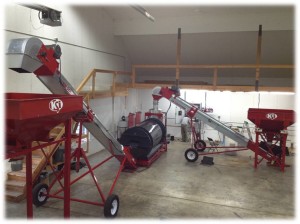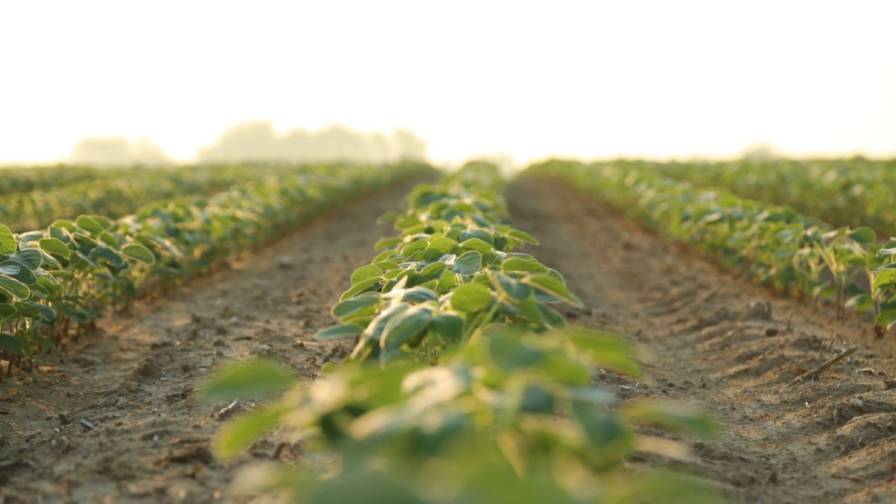Seed Treatment Systems: Simply Breathtaking
In the wild and wacky world of downstream seed treating equipment it is the various seed treatment products — actives, coatings and inoculants — rather than the capabilities or limitations of the actual equipment itself, driving the adoption of automated bulk systems at the retail level.
“Back when I started in seed treatment about 10 years ago, really the only products that were being consistently put on seed were basic fungicides and a low percentage of insecticides,” says Jaco Van Der Westhuizen, seed treatment manager, Crop Production Services (CPS). “Today, there is no ‘Messiah’ seed treatment, it’s more about combining multiple products. When you’ve got four, sometimes five different products going on, you’re going to want to be as accurate as possible.”
Options Evolving
An ag retailer looking to delve into some new bulk seed treating equipment is arguably in the cat-bird seat, as there are several intriguing options out there for the interested buyer.
Bayer CropScience’s On Demand system is one of the more well-known products in downstream treating, according to Kerry Grossweiler, SeedGrowth equipment & coatings manager.
“On Demand is a fully automated, closed system that ensures seed treatments are applied correctly and consistently, resulting in healthier plant establishment,” says Grossweiler. “Right now, our sales people are really focusing on promoting and placing On Demand systems in retail operations for the 2014 growing season.”
The reasons that retailers are excited to implement On Demand are three-fold, according to Grossweiler. “Number one, On Demand is a closed system, which is an important safety feature not only for their people but also for the environment,” he says. “Secondly, it’s the recipes that On Demand can produce. The ability to select pre-loaded recipes with the On Demand system is a tremendous tool that can save an operator measuring and mixing time. And number three is the ability to capture data with the system. Just the simplicity of being able to print out a detailed record of what products went on the seed, how many milligrams of active ingredient were applied to each seed, that’s something growers are looking for.”
Additionally, there are a couple new developments with On Demand for 2014.
“One of the new things we’ve added is the ability to print barcodes, because the system is driven by barcodes that are scanned in for each product that is being applied,” says Grossweiler. “For 2014 we’ve expanded this beyond Bayer products and technologies to other products that are out there in the marketplace. So maybe you are treating with a closed 15 gallon drum system and the product you are using doesn’t already have a barcode. On Demand can create a unique barcode for that product, you scan it in and along with a recipe, you’re ready to go and are treating bulk seed in just a few minutes.”
A new service initiative from Bayer is also reportedly in the works, according to Grossweiler. “As we’ve learned from 2013 after listening to On Demand users, these retailers want the same level of service from us that they are providing to their grower-customers,” he says. “It’s all about service and On Demand’s wireless reporting and cloud capabilities are really unique in that regard.
“Say there is an issue with the system, all you have to do is go to the touchscreen display and send in a ticket and we’ve got several people ready to respond from the service side,” he continues. “We’ve also placed service reps out in the field that are specific for On Demand, so we’re really excited about enhancing our service capabilities, being able to offer 24/7 service during the treating season, because guys are treating at all hours, including the weekend.”
Grossweiler also anticipates an updated operating system for On Demand over the next couple of years.
Entering The Field
Meanwhile, KSi Conveyors — with roots in seed handling equipment and a reputation as a leader in seed treatment site design and automation — is a relatively new player in the market. The Sabetha, KS-based company’s 4808NGA Seed Applicator system, due for limited launch in 2014 and full launch for 2015, debuted at The Farm Progress Show this past August.
According to Rick Smith, director of marketing, the company decided to jump into the seed treatment equipment market after evaluating the challenges faced in today’s seed market and realizing that KSi could provide a unique solution.
 Several features make KSi’s solution unlike others in the market, starting with the KSi VariRate and Loss-In-Weight technologies that replace the traditional seed wheel. According to KSi, the technology removes the need to calibrate the equipment for different varieties and seed sizes, saving time. “This is a very proven, sophisticated technology that is currently in use in other major industries but nobody had been doing it in the downstream seed market before us,” says Smith. “As retailers strive to meet increased accuracy requirements of active ingredients per seed, this technology is going to be much needed.”
Several features make KSi’s solution unlike others in the market, starting with the KSi VariRate and Loss-In-Weight technologies that replace the traditional seed wheel. According to KSi, the technology removes the need to calibrate the equipment for different varieties and seed sizes, saving time. “This is a very proven, sophisticated technology that is currently in use in other major industries but nobody had been doing it in the downstream seed market before us,” says Smith. “As retailers strive to meet increased accuracy requirements of active ingredients per seed, this technology is going to be much needed.”
KSi AutoTreat, the system’s automation software, is also notable for its ease-of-use. “The level of automation that you get, just being able to control the entire process, is one of the keys with this system,” says Smith. “With data becoming more and more important, especially on the stewardship level — being able to prove that you only use so much of a seed treatment — is so important to these retailers.”
AutoTreat also has the ability to be paired with other popular treaters already on the market, according to Smith. “At KSi we like to look at everything holistically. If a customer already has a piece of equipment and they don’t want to replace it, we can usually use it in upgrading the system.”
After field testing the equipment at select retailers this past spring, KSi received some pretty encouraging results. According to Smith, the company found that the system has a treating capacity that ranges from 700 pounds per minute up to 2,500 pounds per minute. Average drum clean out time also was reduced under the KSi system, with other systems averaging two to three minutes to clean out the drum while KSi claims a 30 to 60 second drum clean out window.
“We’re really pleased with our lab results and now we are excited to really prove our system’s worth this spring in real world situations,” says Smith.
Van Der Westhuizen for one is pumped to get his hands on some KSi systems for CPS. “When we evaluate new seed treating equipment for our operation, there are three Ps that we are looking for: Performance, profitability and partnership (with the supplier). KSi hits on all three of those aspects. It’s just a great company to work with.”






